Erkan Kambek
Istanbul Technical University, Turkey
Supervising professor Gülsün Tanyeli
Western Restoration Approaches and Practices in Turkey 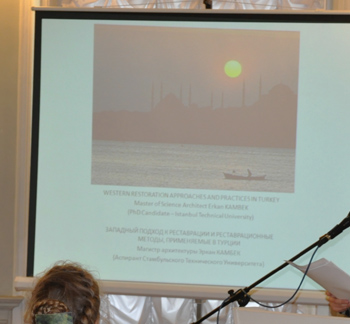
As most of the architectural and art history approaches in Turkey are based on Western theories, restoration theory is also highly influenced by the Western point of view. Of course, Turkey is faced to Western way of life since late 17th century when the first movement of “modernization” started within the Ottoman army. However, the geographical, historical and cultural background of Turkey creates a challenge for the Western theories and local practices.
Nowadays this challenge could be easily observed while having a short walk on the narrow streets of historical center of Istanbul. On the one side, there are big construction-sites for monumental buildings with nice scaffolding covered with drawings printed out on vinyl, on the other side vernacular architecture neighborhoods are neglected or subjected to real estate developers with several gentrification projects. Actually there is no surprise that this confrontation leads to conflict, since the legislation is mostly designed by specialists, however practical executions are somehow run by real estate developers or profit oriented construction firms.
In this paper a brief history of restoration in Turkey will be given from legislative point of view, and then short observations on the formal education of conservators will be made. After this general outline of the situation in restoration in Turkey, the paper will try to trace the development of conservation and restoration roots back in classical period of Turkish Islamic Ottoman architecture starting with a well-known architect Sinan “the Great”.
The challenge mentioned in this paper is evaluated as an opportunity for the future of the conservation and restoration field which can draw inspiration from the geographical, historical and cultural background of Turkey.
Anestis Vasilakeris
Bosphorus University, Istanbul, Turkey
Can Psychoanalysis Contribute to Byzantine Art History?
Can psychoanalysis help us understand Byzantine Art?
Since the beginning of last century, psychoanalysis and the exploration of human unconscious has marked the methodology of Human Studies, and Art History in particular. However, Byzantine Art History has curiously resisted to this influence. In this paper we are trying to understand this phenomenon. Moreover, we are examining possible ways in which the psychoanalytical theory may offer insights to Byzantine Art, like Charles Barber's use of the notion of 'desire' and Georges Didi-Huberman's notion of 'tearing' ('déchirure'). Freud's analysis of dreams, in particular, is applied to decipher complex Byzantine images, such as visions.
Ханько Вера Александровна
МГУ имени М. В. Ломоносова
Научный руководитель: д-р иск., профессор О.С. Попова
Две иконы «Распятие» поздневизантийского времени из собраний ГТГ и ГРМ
Византийская живопись поздневизантийского периода — очень богатый и интереснейший для изучения материал. Однако большое количество и разнообразие памятников зачастую осложняют их атрибуцию.
Ведущим стилистическим направлением в византийской живописи второй половины XIV века было так называемое «классическое», основанное на новой интерпретации классических форм. Но помимо него большим количеством памятников представлена и «экспрессивная» линия палеологовского искусства. Для неё оказываются характерными такие стилистические признаки, как тёмная карнация, мимическая выразительность ликов. Главным в трактовке ликов является тонкая, резкая белильная штриховка, значительно оживляющая, активизирующая разработку формы.
Две иконы, находящиеся сейчас в собраниях Третьяковской галереи и Русского музея, обе на сюжет Распятия, относятся именно к этому кругу. Очень разные и по-своему интересные с иконографической точки зрения, стилистически они образуют единую группу с такими памятниками византийской иконописи, как, например, «Богоматерь Одигитрия» с евангельскими сценами на полях из Византийского музея в Афинах.
Подробный стилистический анализ этих двух икон и расположение их в ряду родственных памятников позволяет отнести их к «экспрессивному» направлению поздневизантийской живописи и датировать второй половиной XIV века.
Ivana Jevtic
Koc University, Istanbul, Turkey
Multiplication and Amplification of Narrative Elements in Late Byzantine Painting: Questions They Raise about Sacred Images 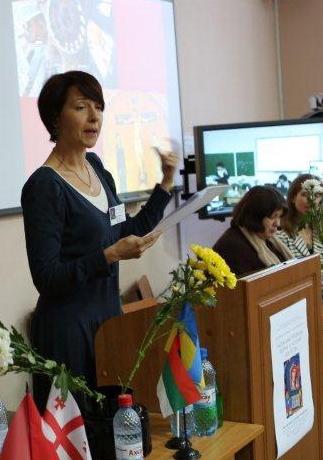
It is often said that the tendency to narrative expression represents one of the key features of the Late Byzantine painting (13th-15th c.). The number of iconographic cycles increased in the interior decoration of numerous churches during that period. Inside the cycles, individual scenes were often filled with diverse secondary figures, architectural elements and other details. Narrative expression existed in Byzantine art before the Late Byzantine period. But, this feature intesified and grew much stronger during that time and I wish to understand its causes. I intend to discuss a number of chosen pictorial devices and analyze how they stretched the possibilities of pictorial narration. Along the way, my aim is to question whether/how such devices modified the viewer’s perception of time, space and drama involved in the sacred images. What does such change reveal about Late Byzantine cultural and religious attitudes? At last, can this phenomena be compared to the similar process of amplification of pictorial narration in the West, at the end of the Middle Ages?
Немыкина Елена Александровна
СПбГУ
Научный руководитель: С.В. Мальцева
Композиция «Предста Царица одесную Тебе» и проблема новгородско-балканских связей в живописи XIV столетия 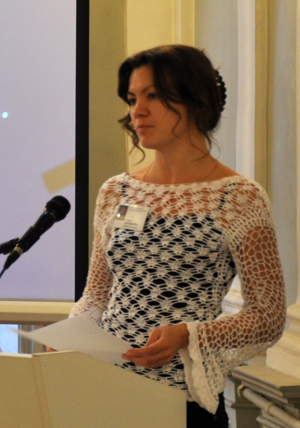
Во второй половине XIV в. наступает пора расцвета новгородской монументальной живописи. Однако, несмотря на давнюю художественную традицию самого Новгорода, на живую восприимчивость его к новым веяниям времени, единой стилистической линии в живописи этого периода не сложилось. Во фресковых ансамблях появляется множество специфических особенностей, которые оказалось невозможно объяснить «византийским влиянием» и поставить в один ряд с памятниками магистральной линии развития византийского искусства. В этой связи внимание исследователей сосредоточилось на искусстве южных славян, тем более что на Балканах, как и на Руси, на протяжении длительного времени в живописи сосуществовали византийские (греческие) традиции и региональные (славянские) тенденции.
Одним из главных аргументов в пользу гипотезы об участии сербских мастеров в росписи фресковых ансамблей Новгорода, в частности церкви Спаса Преображения на Ковалеве (1380 г.), становится ранее неизвестная в древнерусском искусстве композиция «Предста Царица одесную Тебе». Появление данной иконографии традиционно связывают со сценой «Небесного двора», впервые встречающейся во фресковой живописи Македонии времени сербского правления (Трескавац, ок. 1340 г.). Однако, как выяснилось, вопросы об истоках, мастерах и обстоятельствах сложения композиции «Небесного двора» также, в свою очередь, оказываются в числе спорных и актуальных тем современной византинистики. Очевидно, что прояснение этих вопросов может иметь большое значение в контексте актуальной проблемы южнославянских влияний на монументальную живопись Новгорода второй половины XIV века.
В результате проведенного иконографического исследования нам не удалось обнаружить веских оснований для включения композиции «Небесный двор» в круг специфических тем, обусловленных региональной южнославянской традицией. Напротив, на основании сопоставлений с рядом близких сюжетов в росписях куполов кипрских храмов XII и XIV вв., фресковых изображений Месяцеслова в притворе того же Трескавца, которые демонстрируют тесную связь с искусством Салоник пер. четв. XIV в., мы пришли к выводу, что истоки иконографии композиции «Небесный двор», скорее всего, нужно связывать с греческой художественной средой.
Кроме того, полагаем, что «Небесный двор» мог быть не единственным источником для сложения иконографии типа новгородского варианта «Предста Царица одесную Тебе». Еще одна композиция, которая будет рассмотрена в связи с вопросом о происхождении новгородской иконографии — «Царский Деисус». Вопрос о соотношении «Царского Деисуса» и «Небесного двора» на сегодняшний момент не раскрыт со всей полнотой и ясностью. Новгородская «Предста Царица», с одной стороны, связана с обеими балканскими композициями по ряду иконографических признаков, а с другой, — имеет специфическую особенность, не позволяющую говорить о прямом заимствовании или копировании.
В свете иконографических сопоставлений с другими памятниками есть все основания полагать, что истоки композиции «Предста Царица», как и всей росписи Ковалевского храма, следует искать не только в живописи славянских Балкан, но и в столичных, и в провинциальных греческих мастерских.
Яковлева Мария Игоревна
Российский государственный гуманитарный университет
Научный руководитель: д-р иск., профессор О. Е. Этингоф
Икона «Спас Эммануил» из собрания ГИМ — микромозаика раннепалеологовской эпохи 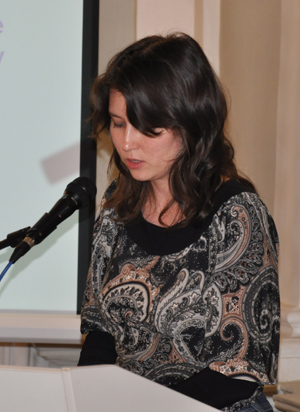
Миниатюрные мозаичные иконы относятся к наиболее изысканным и рафинированным произведениям византийского искусства. В настоящее время известно 36 миниатюрных мозаичных икон, из них четыре находятся в музеях Российской Федерации. Настоящий доклад посвящен одной из них — микромозаике «Спас Эммануил» из собрания ГИМ.
Несмотря на высочайшее мастерство исполнения, икона «Спас Эммануил» до сих пор крайне скупо освещена в научной литературе. Самая важная публикация, ей посвященная, — статья Е. С. Овчинниковой 1968 г. Позднейшие публикации, хотя и уточняют отдельные аспекты бытования иконы, лапидарны и неполны (Искусство Византии в собраниях СССР. Кат.выставки, Т. 3;. И. Л. КызласоваРусская икона XIV–XVI веков. ГИМ, М., 1988. )
Нами предпринята попытка обобщить известные данные об иконе и внести в них коррективы, а также уточнить место иконы «Спас Эммануил» в искусстве раннепалеологовской эпохи.
Осмотр иконы, проведенный с помощью лупы, позволил сделать несколько наблюдений относительно ее стилистических особенностей. Характерной чертой стиля иконы является сочетание исключительно тонкой светотеневой моделировки личного, благодаря которой лик Спаса Эммануила кажется написанным средствами живописи, с некоторой аморфностью и графичностью трактовки одеяний. Образ юного Христа отличается абсолютной естественностью позы, почти портретной иллюзионистичностью, что делает обоснованным предположение об использовании античного прототипа. С этой точки зрения ближайшей параллелью иконе из ГИМ представляется микромозаика «Св. Димитрий» (Италия, Сассоферрато). Стилистические характеристики позволяют, на наш взгляд, датировать икону концом XIII – началом XIV века.
Белова Ольга Дмитриевна
МГУ имени М. В. Ломоносова
Научный руководитель: д-р иск., профессор О.С. Попова
Миниатюры греческой Псалтири второй половины XIII века из РНБ (греч. 269)
Данное исследование посвящено одному памятнику византийской книжной иллюстрации, 4м листам с миниатюрами последней четверти XIII в., которые хранятся в РНБ под шифром греч. 269.
Впервые данным миниатюрам было отведено верное историческое место в статье Курта Вайцманна. Автор аргументировано доказывает, что листы из РНБ были прежде частью cod. Sinait. 38 из монастыря Св. Екатерины.
Петербургско-синайский манускрипт представляет собой один из примеров произведений XIII в., отличающихся ярко выраженным антикизирующим характером. Подобные памятники, с незначительными вариациями повторявшие более ранние прославленные рукописи, являются лучшей иллюстрацией того настроения тоски по великому прошлому, и, в первую очередь, по античному наследию, охватившему Византию в эти годы. Однако, как отмечает Вайцманн, византийцы в этот период, чаще всего, обращаются к античности не напрямую, а посредством образцов неоклассического искусства «Македонского Ренессанса».
Четыре из пяти миниатюр рукописи (три в РНБ на лл. 1‒3 и одна на Синае на л. 155 об.) являются свободными повторениями композиций из знаменитой Парижской Псалтири X в. (gr.139 из Парижской Национальной Библиотеки). В одну группу с данным памятником входят еще несколько копий gr.139 этого же времени: cod. Vatic. Palat. gr. 381 и cod. Hierosol. Τάϕου 51. Однако ни один из данных памятников не является точным повторением gr.139. Все они украшены гораздо меньшим количеством иллюстраций и отличаются от манускрипта-образца по размеру.
Однако греч.269 обладает по сравнению с двумя другими памятниками данной группы еще большим своеобразием. Пятая миниатюра манускрипта не имеет никакого отношения к иллюстрациям Парижской Псалтири, на ней представлена тронная Богоматерь с Младенцем Христом и предстоящие Ей архангелы.
Подробное изучение индивидуальных особенностей данной рукописи, и ее связей, как с прославленным образцом, так и с рукописями своего круга, и станет задачей данной работы.
Яковлева Александра Алексеевна
СПбГУ
Научный руководитель: С. В. Мальцева
Ктиторские композиции в сербской средневековой монументальной живописи. Региональная специфика и проблемы изучения 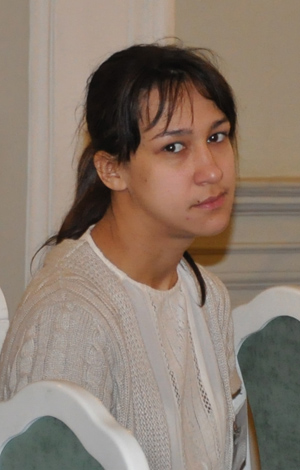
В средневековой Сербии ктиторская тема имеет особую специфику. Изображения исторических персонажей, представленных в живописном пространстве сербского храма, отражают важнейшие идеологические концепции, которые сложились в начале XIII в. и развивались на протяжении нескольких следующих столетий. В это время Сербское государство, управляемое династией Неманичей, приобретает свою церковную и политическую независимость. Основатель династии Стефан Неманя признается святым, что утверждает идею божественного происхождения его власти, которая также передается по наследству. С начала XIII в. на Балканах развивается традиция строительства храмов «задужбин», которые обычно являлись местами упокоения сербских правителей и представителей аристократии. В росписях этих храмов особое значение приобретают не только портреты заказчиков, но и темы, связанные со святородной династией Неманичей.
Несмотря на многочисленное упоминание ктиторских портретов в историографии, комплексного анализа этой проблемы проведено не было. Важнейшим вкладом в исследование ктиторской темы в сербской живописи стали работы Св. Радойчича и Н. Л. Окунева. Однако с тех пор было сделано много новых открытий. Стала очевидной необходимость пересмотра многих устоявшихся представлений и комплексного подхода к этой проблеме.
Francesco Lovino
The University of Padua, Italy
Supervising professors: Prof. Giovanna Valenzano and Prof. Federica Toniolo
The Miniatures of the Michael Glycas' Chronicles in the Marcianus gr. 402 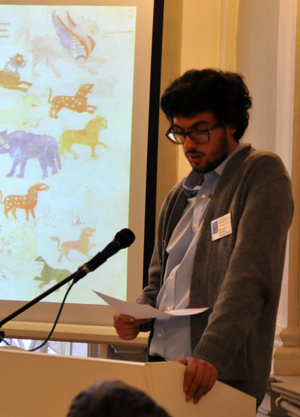
Among the regions of Southern Italy under the Byzantine influence, one of the most prominent was the Terra d'Otranto, where a particular type and artistic language was developed. Here in 1289 (as noted in the colophon at f. 219 r.) was compiled a copy of Michael Glycas' Chronicles, written in the middle of the XII century, which record the events from the creation of the world to the death of Alexius I Comnenus (1118).
The choice of such a text as the Chronicles reveals the existence of a cultural élite, born during the age of Frederik II and still prolific at the end of the XIII century, which continued to look at Constantinople as a guide — even under the Anjou — and was able to commission a volume of a work that seems to be almost completely unknown outside Bosphorus.
But the metropolitan spirit of the codex contrasts with the style of its illustrations that reveal undoubtedly a grichus' (the adjective “grichus” refers to the Greek dialects of Southern Italy) milieu: the Marcian codex is marked for the search of varietas in the decorative choices, which results in a figurative repertory taken over not only from other codices, but from ivories, sculptures and mosaics. The variety of media sources grows up in parallel with the variety of images presented: the codex should be seen in this way as a little compendium of iconography, showing animals taken from the Physiologus, religious scenes such as the Crucifixion, and also historical refererences like the Mandylion taken from Edessa to Constantinople.
The aim of this communication is therefore to present the figurative apparatus of this precious manuscript, which rarely was the subject of critical interventions (Furlan 1980, Canart 1982) in the past century, and to reconstruct the milieu where the codex was produced.
Lorenzo Riccardi
Sapienza University, Rome, Italy
Supervising professor: Prof. Antonio Iacobini
Hagiographical Icons in the Byzantine Wall Painting of Calabria and Southern Italy 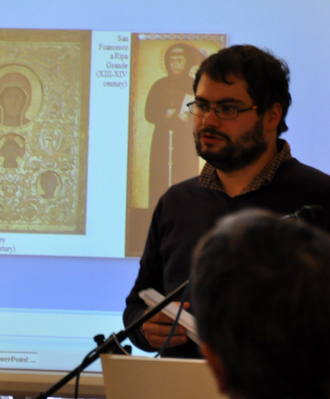
The hagiographical icon, also known as Vita icon or biographical icon, was wide spread in the 13th century, with several variants, in the Eastern Mediterranean and in Southern and Central Italy. According to some scholars, the nerve centre of this type of decoration was the monastery of St. Catherine at Sinai, where important panels are kept or whence some paintings, now in Cyprus and Greece, come from. In these cases, we are talking about icons on wood, generally of large size, in which the scenes usually run along all the four sides of the image of the saint. In Central Italy there are many panels representing St. Francis, especially in Tuscany and in the neighbouring regions: they were used to codify the figure and the image of this new saint just after his death. In Southern Italy it is worth remembering the two well-known large size icons representing St. Nicholas and St. Marina/Margaret, now kept in Pinacoteca Provinciale di Bari. This report has the aim of looking for the hagiographical icons in the wall-painting of some worship places in Southern Italy. In fact, such type of decoration seems to be spread especially in these regions. Well-known paintings are the two Vita icons of St. Marina/Margaret in the crypt of St. Margaret in Mottola (Apulia) and in the cave of St. Margaret in Melfi (Basilicata). At present, two undervalued paintings, recently uncovered in Calabria, enrich this frame of reference: we shall take a closer look at them in our report. In the “chiesa di Campo” of Sant’Andrea Apostolo dello Jonio (Catanzaro) there is a partially preserved hagiographical icon of St. Marina/Margaret of the early 13th century: it shows a particular iconography in the scene of the saint’s life. A Vita icon could be the fresco in the church of St. Donato “al Pantano” in San Donato di Ninea (Cosenza), representing two unidentified full-length saints and two uncertain scenes with monks. At present, this would be an hapax in the Byzantine wall-painting in Southern Italy.
Ekaterine Gedevanishvili
G. Chubinashvili National Research Centre for the History
of Georgian Art and Monument Protection, Tbilisi, Georgia
The Representation of the Last Judgment in the Ikvi Murals
The murals of the Church of St George in Ikvi present quite unusual version of the “Last Judgment” (13th c.). Alongside with typical scenes of the “Last Judgment” the “Entry of Christ into Jerusalem” appears. It occupies the first tier of the painting attracting a very special attention by its location and increased scale of the composition.
The present paper is dedicated to the symbolic interpretation of this composition; along with the semantic understanding of this scene the special accent is given to its specific ‘working’ in the real space.
The inclusion of this composition into the Hades scenes is explained by the influence of the religious literature upon the painting — the hymnography and liturgical texts become the key point for understanding of its significance. It seems though, the contemporary Georgian Hymnography gives the immediate literary sources for interpreting the Ikvi image the “Entry of Christ into Jerusalem “ is linked with the story of rescue of the Prophet Jonah and the story of the Jews’ crossing the Red Sea, symbolically eluding to the defeating of the Hades. This association of the victory over the death (Hell) seems to be palpably reflected in the Ikvi murals, since the “Entry into Jerusalem” is juxtaposed here to the richly illustrated scenes of the Hell.
Along with the subject itself (Adventus), the stylistic feature of the image is of crucial importance. It seems that the structure of the composition reflects this triumphal context. The representation of citizens of Jerusalem (though badly damaged today) presented on the edge of the composition suggested a strong sense of movement from left to right, as if guiding the viewer from the entrance of the church to the inner space. What highlights this impression is that, the figures were directly applied on the surface of the angle of the pilaster developing the impression of ‘descending’ into the real space visually passing the ‘boundary’ of the architectural ‘framing’ unifying the depicted image and the real space of the church. This dynamicity of the Adventus scene is totally transforming the painting of the western arm — destroying the Hades and changing it into the image of Salvation.
Татарченко Светлана Николаевна
Государственный институт искусствознания
Научный руководитель: д-р иск., профессор О.С. Попова
Иконографическая программа и стиль росписи Богородичной церкви в Кинцвиси (Грузия) 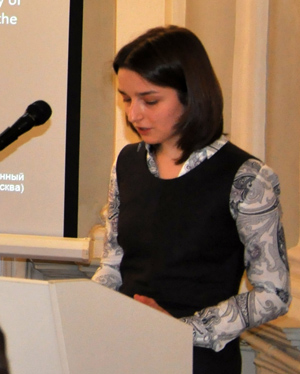
Доклад посвящен памятнику грузинской монументальной живописи — Богородичной церкви в Кинцвиси. От храма сохранилась только алтарная апсида, вся западная половина обрушилась и в настоящий момент закрыта деревянным навесом.
В традиционную систему росписи алтарной апсиды, включающую образ Богоматери в конхе, «Причащение апостолов» и «Службу святых отцов», «вклиниваются» необычные сюжеты, интерпретации которых была посвящена статья Т. Вельманс, дважды публиковавшаяся в 1978 г. и 2003 г. (с некоторыми уточнениями автора). Как ни странно, это единственная работа, посвященная этой церкви. В отличие от находящегося на территории того же Кинцвисского монастыря храма свт. Николая, фигурировавшего в искусствоведческой литературе, Богородичная церковь оставалась почти не замеченной исследователями.
Исторических сведений о строительстве и росписи Богородичной церкви не сохранилось. По поводу времени создания фресок вскользь высказывались разные мнения: перв. пол. XIII в. (Ж. Лафонтен-Дозонь), втор. пол. XIII в. (Т. Вирсаладзе), кон. XIII ‒ нач. XIV в. (Т. Вельманс). Столь неопределенная датировка связана с некоторым «противоречием», существующим, как кажется, между стилем фресок, тяготеющим к нач. ‒ перв. пол. XIII в., и сложной иконографической программой, появление которой более характерно для XIV столетия. Освещение этой проблемы, возможно, могло бы расширить наши представления о грузинском средневековом искусстве.
Макарова Анна Львовна
Государственный институт искусствознания
Научный руководитель: канд. иск. В. Д. Сарабьянов
Фрески Бетании и алтарные программы грузинских памятников XI–XII веков 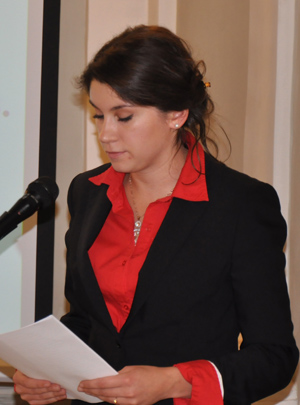
Фрески алтарной апсиды церкви Рождества Богородицы в Бетании являются наиболее ранними относительно остальных живописных зон храмового пространства. Вероятно, они были созданы в последней четверти XI – начале XII века. В силу малой изученности памятника и сложности его датировки программа росписей алтарной апсиды представлялась малоинтересной для исследователей, считалась архаичной стилистически и не изучалась специально с точки зрения иконографического содержания.
Между тем, в росписях алтаря Бетании заложена интересная, сложная, актуальная для своего времени программа, главным свойством которой можно назвать особо подчеркнутую тему священства. Великие святые Вселенской церкви здесь представлены рядом с важными для Кавказа и Закавказья подвижниками. Авторитет Грузинской церкви, таким образом, утверждается присутствием фигур святых, связанных с этим регионом, воспринимаемых в качестве его покровителей — и одновременно почитаемых во всем христианском мире.
В программе живописи алтаря Бетании благодаря особому подбору и взаимному расположению образов пророков, апостолов, первосвященников, святителей и Христа в конхе также ясно читается идея преемственности ветхозаветного и новозаветного священства. Ктиторская тема, связанная с заказчиками живописи Багратидами, косвенно обозначена через выделение фигуры пророка Давида.
В ряду святителей фигуры расположены согласно традиционной схеме (фронтально), что характерно для раннего этапа средневизантийского периода. В то же время, присутствие некоторых иконографических деталей демонстрирует знакомство мастеров с остро-современными богословскими идеями.
Подобная же восприимчивость к новым веяниям, при сохранении несколько архаизированной иконографии, наблюдается и в алтарных апсидах церквей Св. Георгия в Бочорме и Отхта-Эклессия в Тао-Кларджети.
Ekaterina Kvatchatadze
G. Chubinashvili National Research Centre for the History
of Georgian Art and Monument Protection, Tbilisi, Georgia
On Medieval Façade Sculpture in the Orthodox World
The development of medieval sculpture in the Orthodox world is characterized by heterogeneous creative activity. Unlike Western European sculpture, only the relief was admitted. The Orthodox Church did not accept round sculpture to decorate religious buildings almost until the end of the late medieval epoch. Over the centuries in these countries façade sculpture programs and individual representations had been manifested with different meanings and quantities. What unites them, first of all, is artistic visions and themes shared with the all-Christian ideology. The report will make an attempt to reveal the specific peculiarities of the medieval facade sculpture (those of the façade system, subjects, etc.) and their interrelation among the Orthodox countries.
The development of Georgian medieval façade sculpture can be characterized as inconsistent: in the 5th-6th centuries new Christian, Roman-Hellenistic themes (the Ascension, Biblical scenes, donors’ representations, etc.) are introduced from beyond to the Georgian sculpture (Mtskheta, Jvari, Martvili), their placement on the façades represents a clear system. Later on, up to the 10th century, sculptural pursuits mainly occur in the minor sculpture and metal work. From creative point of view, the 10th‒11th centuries are the most fruitful in the monumental sculpture (Tao-Klarjeti, Nikortsminda, Kumurdo, Vale, Svetitskhoveli). Façade décor reflects the themes of the New and Old Testaments unified by theological content. It is also remarkable that at that time (the 11th century) the tendency to use sculpture decoration for the church façades reaches its culmination. Since the end of the 11th century Georgian sculpture suffers a crisis. Medieval Georgian sculpture decoration introduces no idea which would unite the separate reliefs. In this period (12th ‒16th centuries) the church décor uses a small number of separate figure reliefs which lack monumentality and importance, they are either lost in the decorative ornamentation, or are perceived “unsystematically” and unlinked on the façades (Pitareti, Kazreti, Tsunda). A repeated “emergence” of the monumental façade sculpture system unified by a general program can be seen on the façades of the churches at the turn of the 17th ‒18th centuries (Ananuri, Sagarejo “Petre-Pavle”).
A peculiar picture and accents are observed in the medieval Russian façade sculpture, whose development can be seen in the Vladimir-Suzdal reliefs. The decoration system of the Dormition Cathedral (12th c) is still distinguished by its rigor; sculptural decoration is situated only at the upper parts of the church and is submitted to architectural forms. The décor of the church of the Intercession on the Nerl (1165) creates an excellent ensemble of architecture and sculpture. Identical composition of the three façades emphasizes a crystal clarity of symmetrical sculptural décor (David the Psalmist). The sculpture of the Cathedral of Saint Demetrius (1193‒1197) is characterized by even more lightness. Its reliefs are elegant, plane and ornamental, they create a carpet-like cover on the façade (David the Psalmist, animal representations). On the façades of the Cathedral of Saint George at Juryev-Polsky (1230‒1234) the ornamental point is much more intensified (it reveals even a certain influence of a jeweler’s art). The saints’ figures are shown mainly in an iconic manner. From the 14th century on there is no figure relief in Russian architecture, façades are excessively decorative. At the beginning of the 18th century the introduction of Classical and Western European statuary sculpture (Classicist, Baroque) becomes regular in Russia. This sculpture is used mainly to decorate palaces, though it “invades” the façades of several churches too (Dubrovitsy).
Byzantine façade sculpture developed little and, therefore, it does not reveal an evolution line of this kind.
Page 1 of 2


